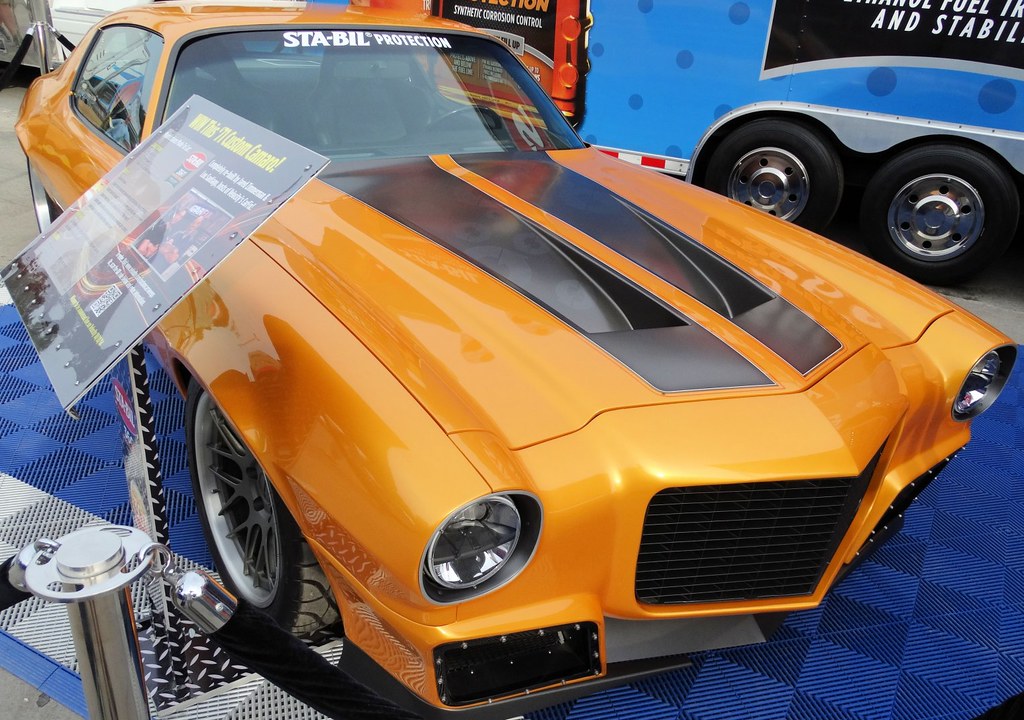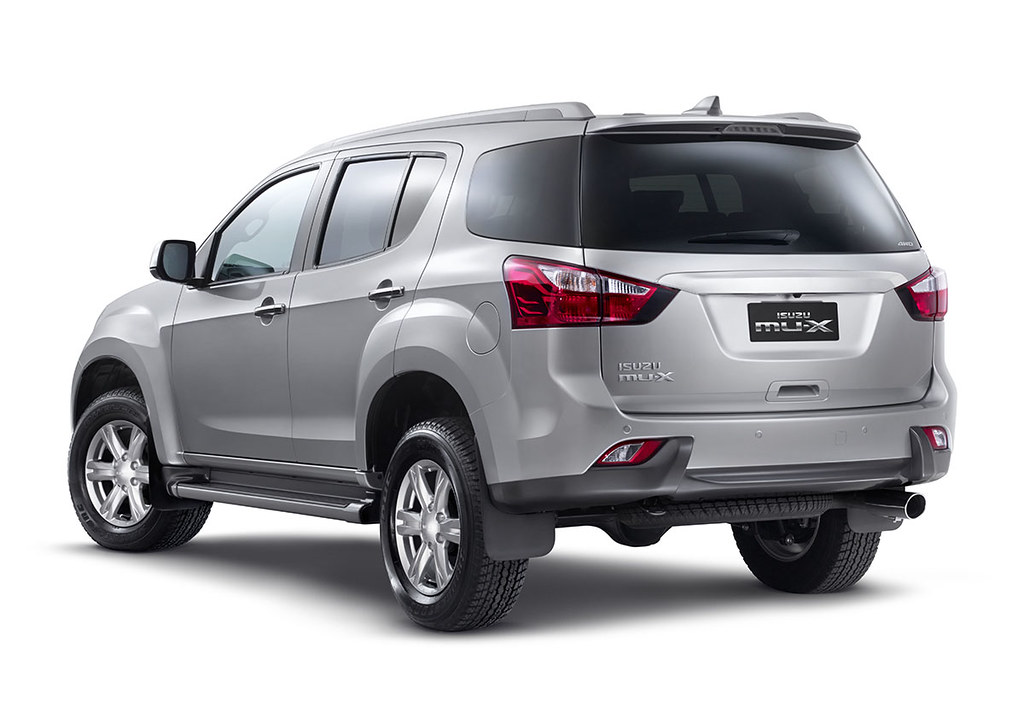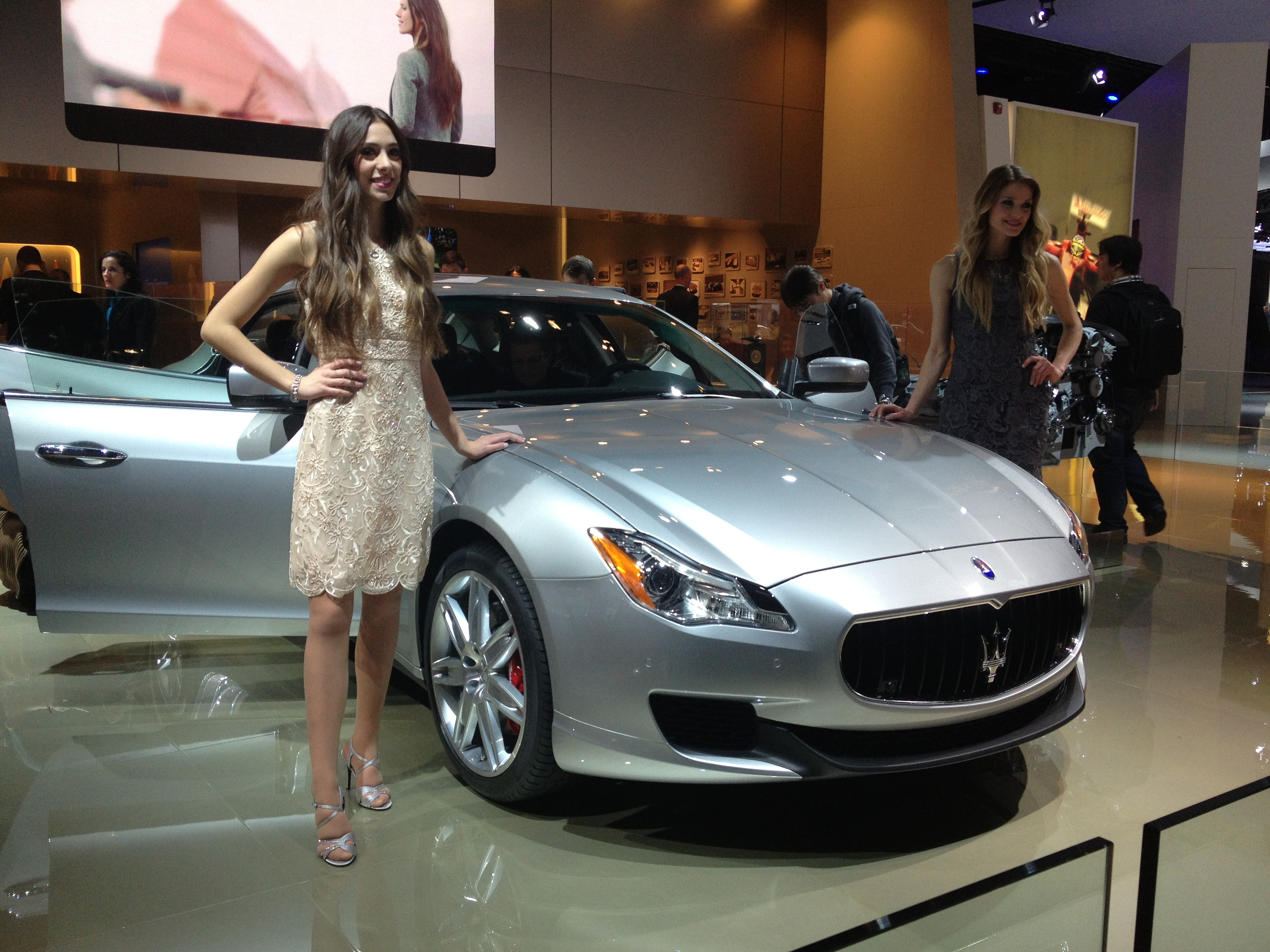
The luxury automobile industry is currently undergoing a groundbreaking transformation. In 2025, artificial intelligence has definitively become the cornerstone of innovation, enhancing virtually every facet of luxury cars, from raw performance to intricate personalization. As manufacturers integrate cutting-edge smart technologies, the very definition of a premium driving experience is being meticulously redefined for discerning customers who demand more than just power under the hood. The focus has undeniably shifted from pure horsepower to an ecosystem of screens, smart systems, and intelligent connectivity that elevates the entire journey.
Remember when the pinnacle of automotive technology meant little more than anti-lock brakes or perhaps an early, somewhat clunky navigation system? Those days are a distant memory. The modern luxury sedan is no longer just a vehicle; it’s a sophisticated, connected device on wheels, a rolling supercomputer that anticipates needs and offers an unprecedented level of interaction. This seismic shift has been propelled by the relentless pace of technological advancement, pushing traditional brands to innovate at an exhilarating rate to meet and exceed the expectations of an increasingly tech-savvy clientele.
This isn’t merely about adding more gadgets; it’s about fundamentally redefining the intricate relationship between the driver, the vehicle, and the surrounding world. From AI-powered voice assistants that learn your habits to augmented reality navigation that guides your gaze directly onto the road, these advancements are crafting cars that are smarter, safer, and infinitely more intuitive. We are witnessing a tech arms race that ultimately benefits us all, the drivers, as manufacturers strive to create the ultimate onboard experience. Let’s dive into the first segment of our definitive list, exploring the initial four groundbreaking luxury sedans that are leading this charge with their cutting-edge technology.
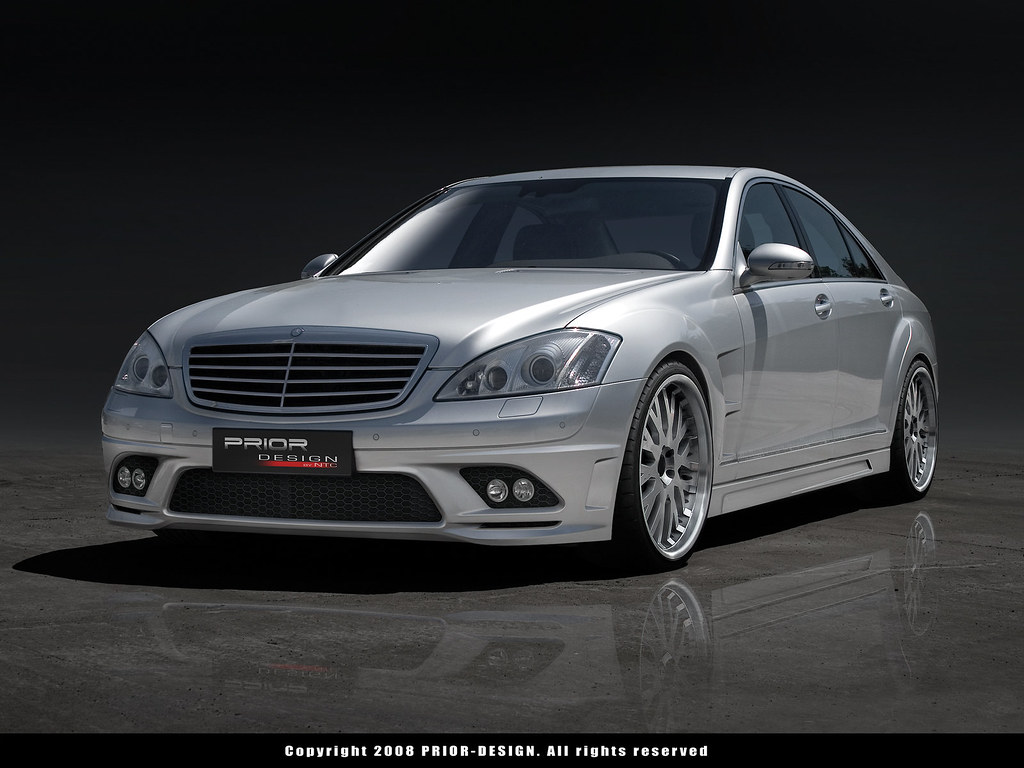
1. **Mercedes-Benz S-Class: The Pinnacle of Innovation**For decades, the S-Class has served as the automotive industry’s most reliable crystal ball; what you encounter here today, you can expect to see integrated into other vehicles a decade from now. The latest generation is certainly no exception, presenting a masterclass in seamlessly blending opulent luxury with truly mind-bending technology. It’s an undeniable testament to the brand’s commitment to pushing boundaries, offering a sanctuary of sophistication that is as intelligent as it is comfortable. As one Seattle-based dealer aptly noted, “The S-Class stands as the flagship sedan of Mercedes-Benz, offering unparalleled levels of sophistication, technology, and performance.” This sentiment accurately captures the vehicle’s position at the forefront of automotive innovation.
The optional 56-inch MBUX Hyperscreen is, without question, the S-Class’s showstopper, capturing attention and redefining the dashboard experience. It’s not merely a singular screen but rather a trio of displays, flawlessly blended under a single pane of glass that gracefully stretches across the entire dashboard. The central and passenger displays leverage vibrant OLED technology, delivering stunning visuals and deep contrasts that enhance readability and engagement. This expansive digital landscape transforms the cabin into a futuristic command center, setting a new benchmark for in-car interfaces.
The system’s “Zero Layer” interface represents a brilliant application of artificial intelligence. It intelligently learns your habits and proactively displays the functions you need, effectively eliminating the need to navigate through cumbersome menus. Imagine wanting to call your partner on your commute home; the system will likely have the contact information readily available on the screen as you pull out of the office, showcasing its predictive capabilities. This intuitive design ensures that essential controls and information are always within easy reach, making interaction seamless and natural.
Beyond the impressive display, the S-Class features an advanced ambient lighting system, equipped with 250 LEDs, which serves a purpose far beyond mere aesthetics. This intelligent lighting is deeply integrated with the vehicle’s driver-assist systems, adding an extra layer of safety. For instance, it will flash red on a specific door if the Blind Spot Assist detects a cyclist as you are about to open it, providing a crucial visual warning. This thoughtful integration transforms the cabin ambiance into an active safety component, dynamically responding to the driving environment.
Adding to this futuristic experience is the augmented reality head-up display, which projects navigation arrows directly onto the road ahead of you. This groundbreaking feature significantly reduces the need for drivers to divert their gaze, improving situational awareness and making complex navigation remarkably intuitive. Piloting the S-Class genuinely feels like commanding a craft from the future, where luxury, intelligence, and safety converge into an unparalleled driving experience. While the best tech features, like the Hyperscreen, often reside on the options list, and the sheer volume of functionalities can initially feel overwhelming, the overall package is an undeniable triumph of automotive engineering and design.
Read more about: From Bespoke Porsches to a Pink Lamborghini: Unpacking BLACKPINK Jennie’s Ultra-Luxe Automotive Collection
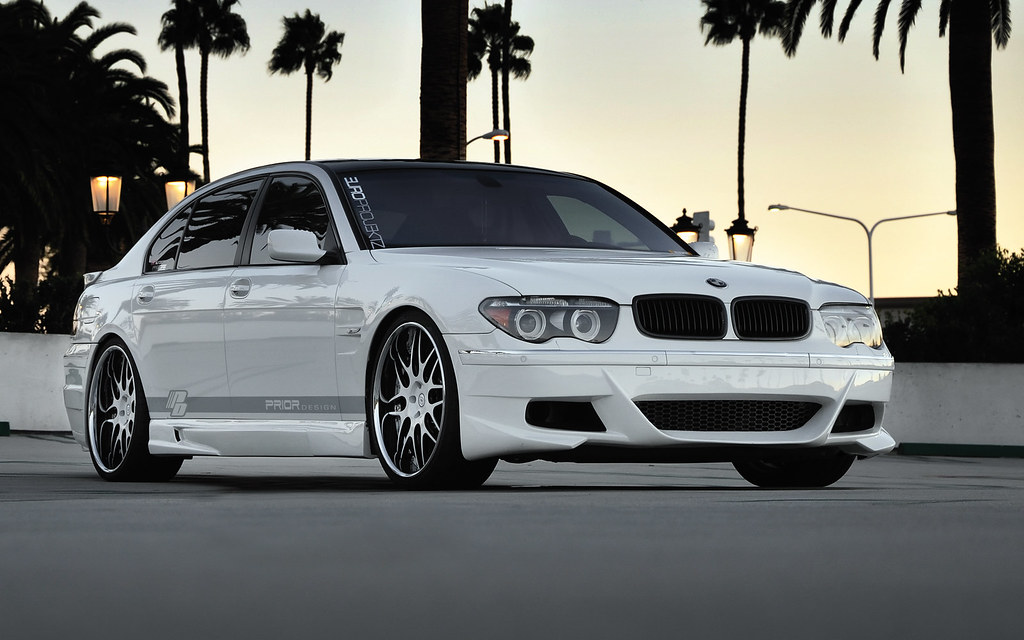
2. **BMW 7 Series: Ultimate Driving Tech Meets Luxury**If the Mercedes-Benz S-Class embodies the elegant tech mogul, then the BMW 7 Series emerges as the tech-savvy disruptor, unapologetically bold and with a distinctive flair for the dramatic. BMW has long championed the concept of the “Ultimate Driving Machine,” but with the introduction of the new 7 Series, they have skillfully broadened this philosophy to encompass the “Ultimate Onboard Experience.” This vehicle is a statement, polarizing in its design but undeniably futuristic in its technological offerings, showcasing BMW’s unwavering commitment to innovation. As BMW themselves state, “The 2025 BMW 7 Series Sedan includes advanced technology befitting a large luxury vehicle,” a claim that is meticulously supported by its extensive feature set.
The absolute jaw-dropper and a definitive highlight of the 7 Series is the available 31-inch BMW Theater Screen, exclusively designed for rear passengers. This magnificent 8K screen elegantly folds down from the headliner, instantly transforming the back seat into a private, immersive cinema. With integrated Amazon Fire TV and robust 5G connectivity, passengers can effortlessly stream movies, engage in high-definition gaming, or participate in video calls without any compromise to quality. Our tests on a long journey confirmed its status as a complete game-changer for keeping occupants thoroughly entertained, creating a truly luxurious travel environment.
Upfront, the driver interacts with the expansive BMW Curved Display and the innovative “Interaction Bar,” a striking crystalline light bar that stretches across the dashboard. This bar is more than just a decorative element; it intelligently houses touch-capacitive controls for climate settings and hazard lights, and dynamically changes color to alert the driver to incoming calls or critical safety warnings. This clever design choice integrates functionality within an aesthetic component, maintaining a clean dashboard while providing essential feedback. The latest iDrive 8.5 operating system further enhances the experience, offering a faster and more intuitive interface with a simplified home screen and significantly improved natural voice commands, making interaction effortless.
The 7 Series excels in delivering an outstanding driving dynamic, a hallmark of the BMW brand, now synergized with cutting-edge connectivity thanks to its 5G capabilities. This robust network ensures that all onboard systems, from infotainment to advanced driver assistance, operate with lightning-fast responsiveness and reliability. Over-the-air (OTA) updates are a standard feature, allowing the vehicle’s software systems to continuously evolve and improve without the need for a dealership visit, effectively ensuring that the car gets better over time. This forward-looking approach to software management keeps the 7 Series at the pinnacle of technological relevance.
However, it’s worth noting that the exterior styling of the 7 Series has proven to be somewhat divisive among enthusiasts and critics alike, demonstrating BMW’s willingness to take bold design risks. Furthermore, while the Interaction Bar adds a unique futuristic touch, it can be a bit distracting during night driving until one becomes accustomed to its dynamic lighting and integrated controls. Despite these considerations, the BMW 7 Series remains an undisputed leader in integrating advanced technology and luxury, offering an unparalleled onboard experience that is both engaging and forward-thinking, truly defining its role as a technological disruptor in the premium sedan segment.
Car Model Information: 2019 Volkswagen Atlas 3.6L SE
Name: BMW 7 Series
Caption: BMW 7 Series (G11)
Manufacturer: BMW
Production: 1977–present
Class: Full-size car,luxury car
BodyStyle: sedan (car)
Predecessor: BMW New Six
Categories: All articles with dead external links, Articles with dead external links from July 2021, Articles with short description, BMW vehicle series, CS1 Chinese-language sources (zh)
Summary: The BMW 7 Series is a full-size luxury sedan manufactured and marketed by the German automaker BMW since 1977. It is the successor to the BMW E3 “New Six” sedan and is now in its seventh generation.
The 7 Series is BMW’s flagship car and is only available in a sedan bodystyle (including long wheelbase and limousine models). It traditionally introduces technologies and exterior design themes before other models in BMW’s lineup.
The first generation of the 7 Series was powered by straight-6 petrol engines, and following generations have been powered by inline-4, straight-6, V8 and V12 engines with both natural aspiration and turbocharging. Since 1995, diesel engines have been optional in the 7 Series.
Unlike the BMW 3 Series and BMW 5 Series sedans, BMW does not offer a full M model, but once offered an M performance variant, the BMW M760 with its 6.6L V12 (at the time the most powerful BMW ever made, not to be confused with BMW 760 6.6 V12 which does not offer the same performance). The Alpina B7 served as the high-performance variant of the 7 Series.
Get more information about: BMW 7 Series
Buying a high-performing used car >>>
Brand: BMW Model: 7 Series
Price: $17,355 Mileage: 72,895 mi.
Read more about: Look Like a Million Bucks on a Budget: 10 Jaw-Dropping Cars That Offer Luxury Without the Lavish Price Tag

3. **Audi A8: Sophisticated Tech and Quattro Power**The Audi A8 has consistently been the choice for those who appreciate understated sophistication within the luxury sedan segment. It distinguishes itself by integrating technology with a quiet, confident competence, rather than broadcasting its capabilities with overt flashiness—a characteristic that we at Car Brands™ deeply respect. This sedan caters to the discerning buyer who values meticulous engineering and Bauhaus-inspired design, prioritizing seamless functionality and refined aesthetics over ostentatious features. The A8’s approach is about intelligent integration, where every technological element serves a clear purpose, enhancing both comfort and control without overwhelming the driver.
Audi’s MMI touch response system is a particular standout feature, exemplifying this philosophy of intelligent design. Rather than relying on a single, expansive screen, it utilizes two exquisitely crafted, high-definition displays seamlessly integrated into the center stack. The pivotal innovation here is the haptic and acoustic feedback provided by these screens; when you press an icon, it produces a satisfying click and subtle pulse, mimicking the tactile sensation of a physical button. This crucial feedback mechanism makes the system significantly easier and safer to operate while driving, allowing for intuitive interaction without diverting your eyes from the road for extended periods.
Of course, the Audi Virtual Cockpit continues to set a benchmark for digital instrument clusters in the automotive world. This high-resolution 12.3-inch display offers unparalleled configurability, allowing drivers to prioritize information precisely as they prefer. Whether you wish to display a full-screen Google Earth map for enhanced navigation, traditional analog-style gauges for a classic feel, or comprehensive media information, the Virtual Cockpit adapts effortlessly to your preferences. Its crisp graphics and fluid animations contribute to a modern and sophisticated driving environment, maintaining Audi’s reputation for cutting-edge digital interfaces.
Perhaps the most remarkable, yet subtly integrated, technology in the A8 is its available predictive active suspension. This innovative system operates by utilizing a forward-facing camera to meticulously scan the road ahead for any imperfections. It then intelligently communicates with electric actuators positioned at each wheel, instructing them to either lift or push down, thereby effectively smoothing out bumps and road irregularities *before* the vehicle even encounters them. This proactive damping system delivers an astonishingly refined and comfortable ride, demonstrating a profound understanding of anticipatory technology.
Beyond comfort, the predictive active suspension also serves a critical safety function. In the event it detects an impending side impact, the system can instantly raise the side of the car by three inches in a fraction of a second. This swift adjustment better positions the chassis to absorb the blow, significantly enhancing occupant protection. While the A8’s technology may not be as immediately “in your face” as some of its rivals, which some users might find less exciting, its thoughtful integration and advanced capabilities, such as the brilliant Virtual Cockpit and the haptic feedback, cement its position as a truly sophisticated choice. The dual-screen setup, while elegant, can admittedly be a magnet for fingerprints, a minor aesthetic trade-off for its superior functionality.
Car Model Information: 2025 Audi A8 L 55
Name: Audi A8
Manufacturer: Audi AG
Assembly: Neckarsulm
Production: #D2
Class: Full-size,luxury car
BodyStyle: sedan (automobile)
Platform: List of Volkswagen Group platforms
Layout: FF layout
Related: Audi S8
Predecessor: Audi V8
Categories: 2000s cars, 2010s cars, 2020s cars, All-wheel-drive vehicles, All articles lacking reliable references
Summary: The Audi A8 is a full-size luxury sedan manufactured and marketed by the German automaker Audi since 1994. Succeeding the Audi V8, and now in its fourth generation, the A8 has been offered with either front- or permanent all-wheel drive and in short- and long-wheelbase variants. The first two generations employed the Volkswagen Group D platform, with the current generation deriving from the MLB platform. After the original model’s 1994 release, Audi released the second generation in late 2002, the third in late 2009, and the fourth and current iteration in 2017. Noted as the first mass-market car with an aluminium chassis, all A8 models have used this construction method co-developed with Alcoa and marketed as the Audi Space Frame.
A mechanically upgraded, high-performance version of the A8 debuted in 1996 as the Audi S8. Produced exclusively at Audi’s Neckarsulm plant, the S8 is fitted standard with Audi’s quattro all-wheel drive system. The S8 was only offered with a short-wheelbase for the first three generations, being joined by a long-wheelbase variant for the fourth generation.
Get more information about: Audi A8
Buying a high-performing used car >>>
Brand: Audi Model: A8
Price: $79,701 Mileage: 935 mi.
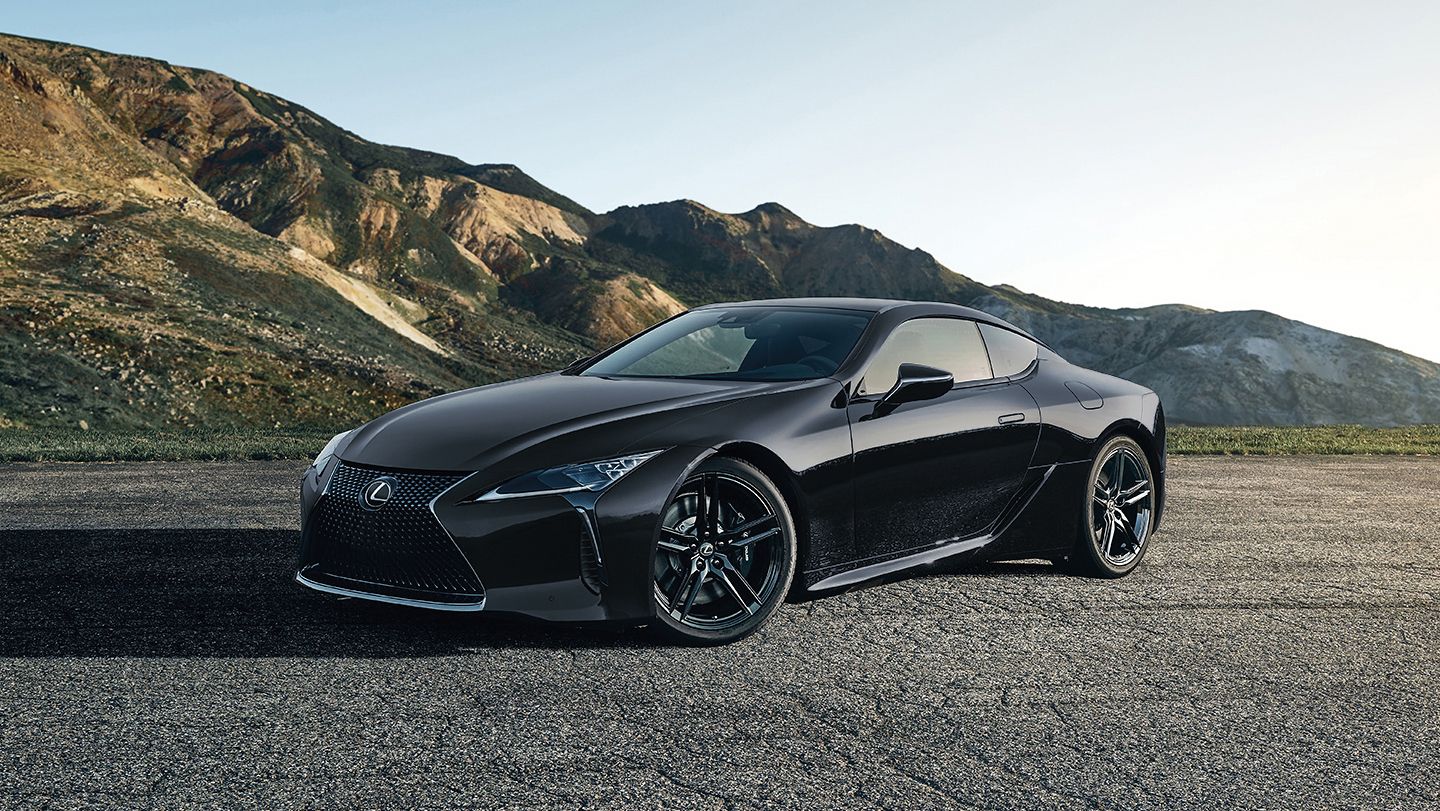
4. **Lexus LS: Reliability Meets Smart Features**The Lexus LS has meticulously carved out its distinct niche within the luxury sedan market by offering levels of quietness and comfort that rival the S-Class, all while upholding an unimpeachable reputation for reliability. Historically perceived as somewhat conservative in its technological adoption, the latest iteration of the LS has significantly upped its game. It now skillfully blends its traditional strengths with a generous infusion of modern tech, particularly excelling in the realm of advanced driver-assistance systems. This evolution demonstrates Lexus’s commitment to staying competitive by embracing contemporary innovations while preserving its core values.
The undeniable star of the show in the Lexus LS is the Lexus Teammate system. This advanced driver-assistance system provides sophisticated hands-free driving capabilities on limited-access highways, marking a significant stride in semi-autonomous motoring. It stands out as one of the most intuitive and remarkably smooth Level 2 systems we have had the opportunity to test. The Teammate system can proficiently handle lane changes, manage merging maneuvers, and maintain both speed and distance with an exceptional degree of grace and precision, instilling a profound sense of confidence in the driver. This intelligent assistance transforms long-distance highway travel into a remarkably relaxed and enjoyable experience.
Further enhancing its convenience features, the system’s “Advanced Park” functionality is nothing short of magical. It is adept at expertly navigating the vehicle into both parallel and perpendicular parking spots with minimal driver input. This means the car can essentially park itself, reducing the stress and complexity often associated with tight urban parking situations. The integration of such intelligent features speaks volumes about Lexus’s commitment to not just safety, but also unparalleled convenience, making the LS a truly effortless vehicle to operate in a variety of challenging scenarios.
For many years, a recurring critique of Lexus’s infotainment offerings centered on the often-frustrating Remote Touch trackpad. To the collective relief of tech enthusiasts and drivers alike, this interface has finally been replaced! The new LS proudly features a large, highly responsive touchscreen that is considerably easier and more intuitive to use. This significant upgrade marks a pivotal moment for Lexus, bringing its infotainment system firmly into the modern era. The new interface operates with cleaner software, and now includes standard Apple CarPlay and Android Auto integration, ensuring seamless smartphone connectivity for all users.
When paired with the stunning 23-speaker Mark Levinson audio system, the cabin of the Lexus LS transforms into an exceptionally serene and enjoyable environment. The combination of improved infotainment, advanced driver assistance, and superior acoustics creates a passenger experience that is both luxurious and technologically forward. While the infotainment system, despite its considerable improvements, may not yet possess the sheer slickness or expansive features of its German competitors, and the overall tech suite might be less comprehensive than offerings from the S-Class or 7 Series, the LS nonetheless offers an incredibly compelling package of reliability, comfort, and smart, user-friendly technology. It maintains its unique identity while boldly stepping into the future of luxury automotive tech.
Car Model Information: 2018 Lexus LS 500 F Sport
Name: Lexus LS
Caption: Lexus LS 500
Manufacturer: Toyota
Aka: Toyota Celsior (Japan, 1989–2006)
Production: May 1989 – present
ModelYears: 1990–present
Assembly: Tahara, Aichi
Class: unbulleted list
BodyStyle: Sedan (automobile)
Layout: unbulleted list
Categories: 1990s cars, 2000s cars, 2010s cars, 2020s cars, All-wheel-drive vehicles
Summary: The Lexus LS (Japanese: レクサス・LS, Hepburn: Rekusasu LS) is a series of full-size luxury sedans that have served as the flagship model of Lexus, the luxury division of Toyota, since 1989. For the first four generations, all LS models featured V8 engines and were predominantly rear-wheel-drive. In the fourth generation, Lexus offered all-wheel-drive, hybrid, and long-wheelbase variants. The fifth generation changed to using a V6 engine with no V8 option, and only one length was offered.
As the first model developed by Lexus, the LS 400 debuted in January 1989 with the second generation debuting in November 1994. The LS 430 debuted in January 2000 and the LS 460/LS 460 L series in 2006. A domestic-market version of the LS 400 and LS 430, badged as the Toyota Celsior (Japanese: トヨタ・セルシオ, Hepburn: Toyota Serushio), was sold in Japan until the Lexus marque was introduced there in 2006. In 2006 (for the 2007 model year), the fourth generation LS 460 debuted the first production eight-speed automatic transmission and an automatic parking system. In 2007, V8 hybrid powertrains were introduced on the LS 600h/LS 600h L sedans.
Development of the LS began in 1983 as the F1 project, the code name for a secret flagship sedan. At the time, Toyota’s two existing flagship models were the Crown and Century models – both of which catered exclusively for the Japanese market and had little global appeal that could compete with international luxury brands such as Mercedes-Benz, BMW and Jaguar. The resulting sedan followed an extended five-year design process at a cost of over US$1 billion and premiered with a new V8 engine and numerous luxury features. The Lexus LS was intended from its inception for export markets, and the Lexus division was formed to market and service the vehicle internationally. The original LS 400 debuted to strong sales and was largely responsible for the successful launch of the Lexus marque.
Since the start of production, each generation of the Lexus LS has been manufactured in the Japanese city of Tahara, Aichi. The name “LS” stands for “Luxury Sedan”, although some Lexus importers have preferred to define it as “Luxury Saloon”. The name “Celsior” is taken from Latin word “celsus”, meaning “lofty” or “elevated”.
Get more information about: Lexus LS
Buying a high-performing used car >>>
Brand: Lexus Model: LS
Price: $45,999 Mileage: 27,704 mi.
Read more about: Consumer Reports Insights: 12 Top SUVs Proven to Last Over 250,000 Miles for Unrivaled Long-Term Value

5. **Tesla Model S: Electric Luxury with Autopilot**No comprehensive discussion of tech-forward sedans could possibly omit the Tesla Model S, the vehicle that arguably kickstarted the entire electric vehicle revolution. While conversations may arise regarding its traditional ‘luxury’ credentials in terms of interior material choices, its undeniable technological impact and influence on the automotive landscape are monumental. The Model S conclusively demonstrated that an electric vehicle could be incredibly desirable, blisteringly fast, and packed with a staggering array of technology that often outpaced established brands. It set a new benchmark for what an EV could be, not just a niche product but a mainstream, high-performance option.
The heart of the Model S experience is its massive 17-inch central touchscreen, which serves as the singular command center for virtually every function imaginable. From granular climate control settings and detailed navigation maps to streaming Netflix and engaging in video games—naturally, when parked—this interface manages it all. The user interface is celebrated for its lightning-fast responsiveness and intuitive design, often likened to the seamless operation of a high-end tablet. However, Tesla’s profound genius truly resides in its overarching software architecture and, critically, its Over-the-Air (OTA) updates. This capability means your vehicle regularly receives new features, performance enhancements, and crucial bug fixes, fundamentally improving over time in a way that legacy automakers are still diligently working to master.
Tesla’s Autopilot stands as one of the most widely recognized advanced driver-assistance systems (ADAS) globally. The optional Full Self-Driving (FSD) Capability, despite its rather ambitious nomenclature, extends these features to include traffic light and stop sign control, along with autosteer functionality on city streets. It represents an exceptionally ambitious and continuously evolving system, offering a fascinating glimpse into a future of enhanced autonomy. Yet, it remains explicitly a ‘beta’ product, necessitating constant driver vigilance and interaction, as its real-world execution can still exhibit inconsistencies. This system pushes boundaries but simultaneously underscores the ongoing development in autonomous driving.
Indeed, the Model S continues to lead with its industry-leading OTA updates, an incredibly fast and intuitive infotainment system, and its impressive EV performance and expansive range. These attributes consistently set it apart. However, the Full Self-Driving package remains a costly option, often feeling akin to a public beta test rather than a fully polished product. Furthermore, the interior material quality and the overall fit-and-finish, while improved, still tend to lag behind its more established German luxury rivals, and the conspicuous absence of physical buttons for very basic functions can undeniably be a source of frustration for some users.
Car Model Information: 2023 Toyota Camry SE
Name: Tesla Model S
ModelYears: 2013–present
Alt: A front-three quarter view of a gray Model S
Caption: #2016–2019: First major update
Designer: Franz von Holzhausen
Weight: cvt
Height: cvt
Width: cvt
Length: cvt
Wheelbase: cvt
ElectricRange: cvt
Battery: kWh,lithium-ion battery
Motor: Unbulleted list
Transmission: Reduction drive
Related: Tesla Model X
Layout: Rear-motor, rear-wheel drive,Dual-motor, all-wheel-drive,Tri-motor, all-wheel-drive layout
BodyStyle: liftback,sedan (automobile)
Class: Full-size car
Assembly: Unbulleted list
Production: June 2012 – present
Manufacturer: Tesla, Inc.
Sp: us
Chassis: Unibody
Categories: 2020s cars, All-wheel-drive vehicles, All Wikipedia articles written in American English, All articles containing potentially dated statements, Articles containing potentially dated statements from 2025
Summary: The Tesla Model S is a battery-electric, four-door full-size car produced by the American automaker Tesla since 2012. The automaker’s second vehicle and longest-produced model, the Model S has been described as one of the most influential electric cars in the industry. Car and Driver named it one of the best cars of the year in 2015 and 2016. Its various accolades include the Motor Trend Car of the Year Award in 2013.
Tesla started developing the Model S around 2007 under the codename WhiteStar. Initially, Henrik Fisker was appointed as the lead designer for the WhiteStar project; after a dispute with Elon Musk, Tesla’s CEO, Fisker was replaced by Franz von Holzhausen. By 2008, von Holzhausen had designed what would become the production Model S’s exterior. Tesla unveiled a prototype of the vehicle in March 2009 in Hawthorne, California. In 2010, Tesla acquired a facility in Fremont, California, to produce the Model S, which was previously owned by General Motors and Toyota. Series manufacture of the car officially began at the Tesla Fremont Factory in June 2012. Tesla carried out the final assembly for European markets at its facilities in Tilburg, Netherlands, between 2013 and 2021.
The Model S typically uses either one or initially two alternating current induction motors; since 2019, dual-motor versions have used a permanent magnet motor in the front, though the high-performance Model S Plaid’s three motors are permanent magnet units by default. Constructed mostly of aluminum, the Model S shares 30 percent of its components with the Model X—a crossover SUV that was introduced in 2015. The Model S has undergone several updates during its production, the most prominent ones occurring in 2016 and 2021. These updates have usually included modifications to the motor, such as changes to power or torque, revised exterior elements, and refreshed interior features. One such change included the 2015 introduction of Tesla Autopilot—a partial vehicle automation advanced driver-assistance system.
In 2015, the Model S was the world’s best-selling plug-in electric vehicle. In 2012, it was included on Time’s list of the Best Inventions of the Year, and the magazine later included it on its list of the 10 Best Gadgets of the 2010s in 2019. In 2014, The Daily Telegraph described the Model S as a “car that changed the world”. Road & Track argued that, with the introduction of the Plaid and features such as the yoke steering wheel, Tesla managed to turn the Model S into “perhaps one of the worst [cars in the world]”.
Get more information about: Tesla Model S
Buying a high-performing used car >>>
Brand: Tesla Model: Model S
Price: $25,000 Mileage: 44,388 mi.
Read more about: Buyer Beware: These 12 Popular Cars Become Costly Money Pits Once They Hit 100,000 Miles

6. **Genesis G90: Korean Luxury with Tech Flair**The Genesis G90 has emphatically moved beyond merely being a compelling value proposition; it has evolved into a formidable, full-fledged luxury contender, boasting a stunning design aesthetic paired with an impressive array of clever technologies. Genesis has masterfully engineered its flagship sedan, integrating a wealth of features that often require expensive optional packages on its European counterparts, thereby presenting a remarkably compelling and well-equipped package to discerning buyers. It stands as a testament to the brand’s rapid ascent in the premium segment, challenging established norms with its thoughtful approach to luxury and technology.
The G90’s cabin truly epitomizes a tech-lover’s paradise, offering a serene and sophisticated environment. It showcases a beautifully integrated panoramic display that seamlessly incorporates both the digital instrument cluster and a large, crisp infotainment screen. Yet, the true ingenuity lies in the meticulous attention to subtle details. The innovative “Mood Curator” system, for instance, intelligently orchestrates a symphony of elements, adjusting the ambient lighting, fine-tuning the sound system, and even deploying an onboard fragrance dispenser to cultivate a specific atmosphere, such as ‘Vitality’ or ‘Care.’ While such a feature might initially strike some as a mere gimmick, our extensive testing revealed its surprising effectiveness in creating a genuinely relaxing and personalized ambiance within the cabin.
Beyond the headline features, the Genesis G90 is replete with intelligently designed, thoughtful technological inclusions aimed at enhancing the user experience. The doors, for instance, can be effortlessly closed with the simple press of a button, adding a touch of effortless convenience. The center console thoughtfully includes a UV-C sterilization compartment, allowing occupants to sanitize their mobile phones on the go. Furthermore, the driver’s seat boasts an “ergo-relaxing” massage function, which proved to be nothing short of divine on extended journeys, significantly reducing fatigue. The car even integrates a sophisticated fingerprint authentication system, allowing for secure vehicle startup and the automatic loading of personal driver profiles, showcasing Genesis’s deep commitment to intuitive personalization.
Ultimately, the Genesis G90 delivers an incredible amount of standard technology for its price point, wrapped within a beautifully crafted and intuitive interior design. Its innovative comfort features, like the integrated fragrance system and advanced massage seats, genuinely elevate the onboard experience. However, it still faces the challenge of establishing the same level of brand prestige as its deeply entrenched German rivals in the luxury market. Additionally, while highly capable, its infotainment system, though excellent, doesn’t quite match the sheer advanced sophistication or expansive feature sets found in the Mercedes-Benz MBUX Hyperscreen or BMW’s iDrive 8.5, an area where it continues to evolve.
Car Model Information: 2025 Genesis G80 2.5T AWD
Name: Genesis G90
Manufacturer: Genesis Motor
Production: 2015–present
ModelYears: 2017–present
Class: Full-size car,luxury car
BodyStyle: Sedan (automobile)
Layout: Front-engine, rear-wheel-drive layout,Front-engine, four-wheel-drive layout
Predecessor: Hyundai Equus
Categories: All Wikipedia articles written in American English, Articles containing Korean-language text, Articles with short description, CS1 Korean-language sources (ko), Commons category link from Wikidata
Summary: The Genesis G90 (Korean: 제네시스 G90) is a full-size car manufactured since 2015 by the South Korean company Genesis, the luxury division of Hyundai Motor Company. It is the flagship model of the Genesis lineup. A four-door sedan, the G90 is the successor of the Hyundai Equus and was known as the Genesis EQ900 in South Korea from 2015 to 2019.
The G90 is the first flagship sedan introduced by the Genesis brand. The first generation was released in December 2015, and it went on sale in North America, Russia, and the Middle East in the second half of 2016. It began development in 2012, and was developed over a period of four years, with approximately 1,200 dedicated researchers working on the design and mass production stages. In November 2018, the facelifted EQ900 went on sale in the Korean market, and from this model onwards, it was also sold in Korea under the name G90.
The current model is the second generation released in 2021. In order to reduce the thickness of the headlamps and the size of the low beam lamps, the micro lens array (MLA) technology was introduced to cross-arrange the low beams, daytime running lights, turn signals, and high beams. The second generation is divided into a regular model and a Long Wheelbase (LWB) model, and the G90L has not currently been released.
Get more information about: Genesis G90
Buying a high-performing used car >>>
Brand: Genesis Model: G90
Price: $48,550 Mileage: 6,192 mi.
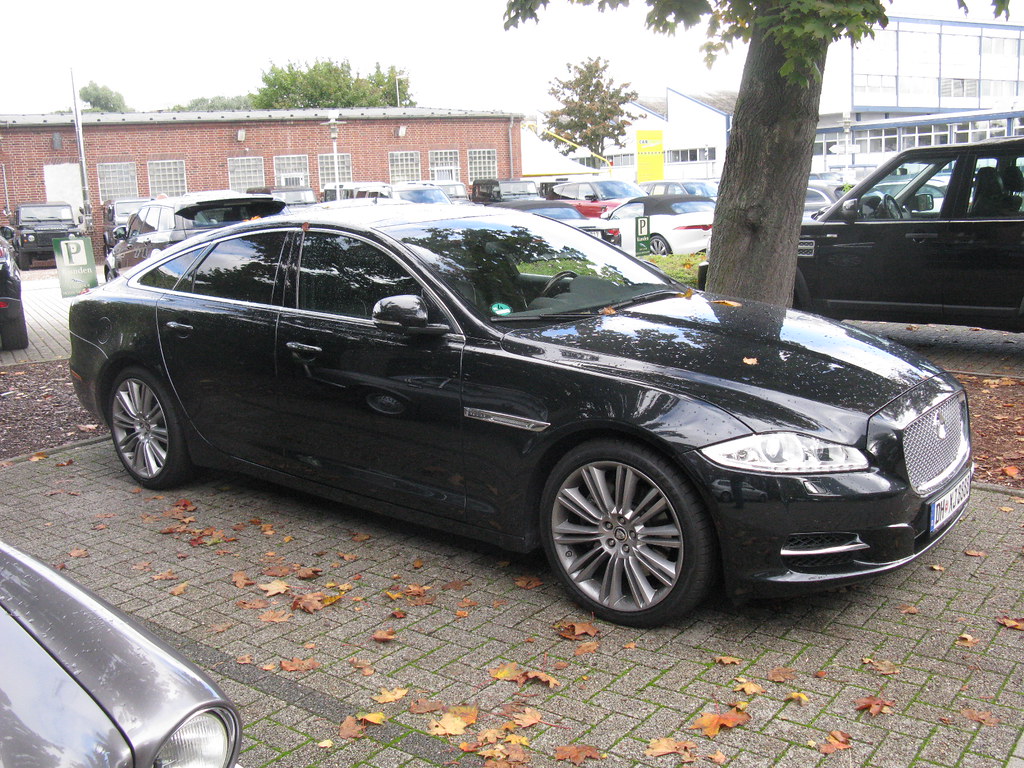
7. **Jaguar XJ: British Elegance and Modern Tech**The Jaguar XJ has historically represented a distinct choice for those who seek their luxury sedan infused with a generous measure of sporting character and an unmistakable British charm. While the specific XJ model as we knew it has concluded its production run, making way for an ambitious all-electric future for the brand, late-model versions were undeniably packed with sophisticated modern technology that ensures their continued relevance in the contemporary luxury landscape. The XJ, in its previous iterations, proudly stood as a classic choice, frequently lauded in various automotive brand comparisons for its unique blend of tradition and innovation.
One of the most significant technological enhancements introduced in recent XJ models was the implementation of the Pivi Pro infotainment system. This represented a monumental leap forward from Jaguar’s previous, often criticized, laggier systems. Pivi Pro boasts a dedicated battery, enabling instantaneous boot-up times, which immediately distinguishes its responsiveness. The interface itself is characterized by its clean, intuitive layout, closely mimicking the user experience of a modern smartphone, and crucially, it features seamlessly integrated Spotify as well as standard Apple CarPlay and Android Auto connectivity. Furthermore, the system supports Over-the-Air (OTA) updates, a vital feature that guarantees the system remains current and continuously improves without the need for physical dealership visits.
The XJ consistently demonstrated a masterful ability to blend traditional luxury design cues with contemporary digital interfaces. The 12.3-inch interactive driver display, for instance, is crisp, highly configurable, and graphically sophisticated, yet it is thoughtfully housed within a dashboard architecture that retains the unmistakable feel of a classic Jaguar. This approach stands in stark contrast to the more screen-dominated cockpits prevalent in many German luxury vehicles. Such a design philosophy will undoubtedly appeal to discerning individuals who prefer an interior that feels less like a spaceship and more like a refined, timeless automotive cabin.
In summation, the Jaguar XJ offers an elegant design that brilliantly fuses classic aesthetics with modern technology, underscored by its responsive Pivi Pro system and engaging driving dynamics, hallmarks of the brand. However, it’s important to acknowledge that its overall tech suite is not as comprehensively advanced or feature-rich as those found in some of its newer, more aggressively digital rivals. The fact that its production has ended also means that new models are no longer available, shifting its appeal primarily to the pre-owned market, where its unique blend of style and tech still holds significant allure.
Car Model Information: 2007 Jaguar XJ XJ8
Name: Jaguar XJ
Caption: 2015 Jaguar XJR (X351)
Manufacturer: Jaguar Cars
Production: 1968–2019
Class: Full-size,luxury car
Layout: Front-engine, rear-wheel-drive
Categories: 1970s cars, 1980s cars, 1990s cars, 2000s cars, 2010s cars
Summary: The Jaguar XJ is a series of mid-size/full-size luxury cars produced by British automobile manufacturer Jaguar Cars (becoming Jaguar Land Rover in 2013) from 1968 to 2019. It was produced across four basic platform generations (debuting in 1968, 1986, 2003, and 2009) with various updated derivatives of each. From 1970, it was Jaguar’s flagship four-door model. The original model was the last Jaguar saloon to have been designed under the leadership of Sir William Lyons, the company’s founder, and the model has been featured in a myriad of media and high-profile appearances.
Get more information about: Jaguar XJ
Buying a high-performing used car >>>
Brand: Jaguar Model: XJ
Price: $12,985 Mileage: 67,968 mi.
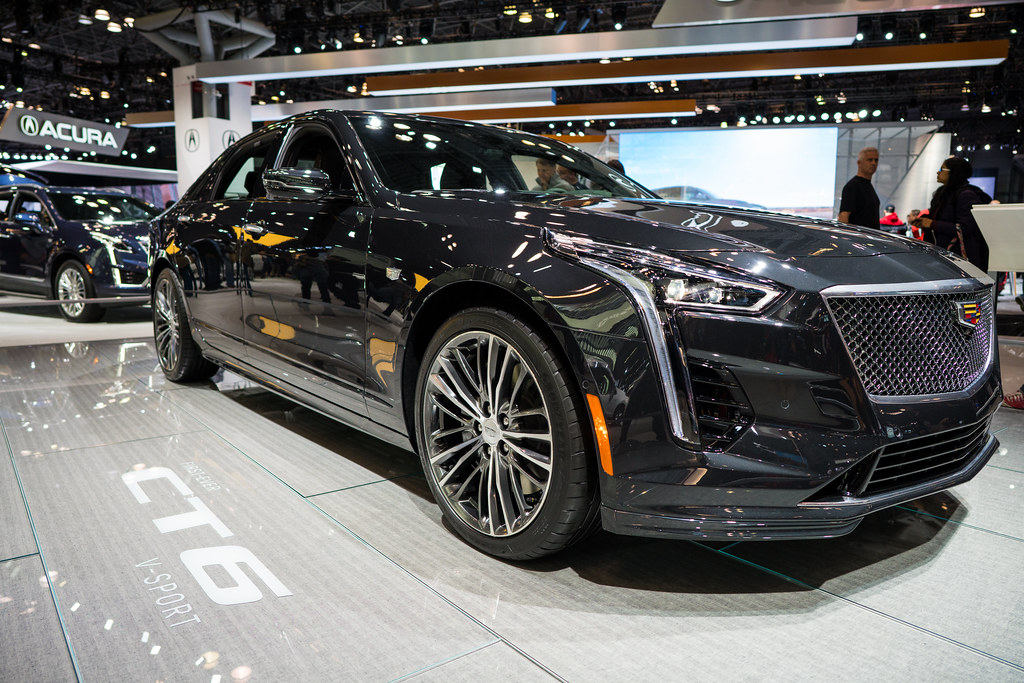
8. **Cadillac CT6: American Innovation and Comfort**The Cadillac CT6 represented a truly bold and ambitious declaration from America’s premier luxury brand, expressly engineered to directly challenge the deeply entrenched German titans of the automotive world. Much like the Jaguar XJ, its production run in North America was, regrettably, cut short. Despite this, the CT6 undeniably bequeathed a significant technological legacy, primarily through its groundbreaking and highly innovative driver-assistance system, which continues to set benchmarks in the industry.
The undisputed highlight and the most enduring contribution of the CT6 is the pioneering Super Cruise system. This technology was first launched with the CT6 and unequivocally remains one of the finest hands-free driving systems available on the market today. Utilizing a sophisticated combination of LiDAR map data, high-precision GPS, and an ingenious driver attention system—a subtle camera strategically positioned on the steering column that meticulously monitors the driver’s eyes—Super Cruise permits genuine hands-free operation on an impressive network of over 400,000 miles of compatible highways across the U.S. and Canada. Its operation is characterized by incredible smoothness and instills profound confidence in the driver, making it an absolute game-changer for long-haul highway cruising.
Within the CT6’s cabin, drivers interacted with a substantial 10.2-inch touchscreen featuring the Cadillac User Experience (CUE) system. While certainly functional and responsive, it candidly lacked the refined polish and seamless integration observed in the very best infotainment systems available from competitors. Nevertheless, the CT6 did offer several other notably cool technological features. These included an innovative rear camera mirror, which provided a wide, unobstructed digital view of the area directly behind the vehicle, significantly enhancing rearward visibility. Furthermore, an available 34-speaker Bose Panaray audio system delivered an absolutely phenomenal, immersive sound experience, transforming the cabin into a concert hall on wheels.
Therefore, the Cadillac CT6 stands out for its industry-leading Super Cruise hands-free driving capability, offering an exceptionally comfortable and quiet ride, alongside unique features like the highly practical rear camera mirror. Its groundbreaking autonomous features undoubtedly pushed the envelope for American luxury. On the downside, the CT6 has been discontinued in North America, which limits its accessibility for new car buyers. Moreover, its infotainment system, while adequate, generally feels somewhat dated when directly compared to the more advanced and slicker offerings from its contemporary competition, highlighting a key area where it fell short of true market leadership.
Car Model Information: 2020 Cadillac CT6 Luxury
Name: Cadillac CT6
Manufacturer: General Motors
Production: January 2016–present
ModelYears: 2016–2020 (North America),2016–present (China)
Class: Full-size,luxury car
BodyStyle: Sedan (car)
Sp: us
Successor: Cadillac Celestiq
Categories: 2010s cars, 2020s cars, All-wheel-drive vehicles, Articles with Chinese-language sources (zh), Articles with short description
Summary: The Cadillac CT6 (short for Cadillac Touring 6) is a full-size luxury car manufactured by Cadillac between 2016 and 2020 over two generations. The first generation CT6 was introduced at the 2015 New York International Auto Show and went on sale in the U.S. in March 2016. It is the first car to adopt the brand’s revised naming strategy, as well as the first rear-wheel drive full-size Cadillac sedan since the Fleetwood was discontinued in 1996.
In 2020, the CT6 was discontinued in the United States, to be replaced by the forthcoming Cadillac Celestiq liftback sedan.
Get more information about: Cadillac CT6
Buying a high-performing used car >>>
Brand: Cadillac Model: CT6
Price: $33,900 Mileage: 84,298 mi.

9. **Porsche Panamera: Sporty Tech in a Luxury Sedan**For those who refuse to compromise on driving exhilaration but still demand the pinnacle of luxury tech, the Porsche Panamera presents a compelling, singular answer. It masterfully achieves a harmonious marriage between the performance DNA that defines a Porsche 911 and the expansive space and sophisticated technology expected of a high-end, four-door luxury sedan. The technological advancements embedded within the Panamera are not merely about enhancing comfort or convenience; they are meticulously engineered to actively amplify and refine the very essence of the driving experience, pushing the boundaries of what a luxury car can achieve dynamically.
The Panamera’s cockpit, affectionately known as the Porsche Advanced Cockpit, is a stunning synthesis of traditional Porsche design philosophy and cutting-edge digital integration. The iconic central analog tachometer, a quintessential Porsche signature, remains proudly in place, flanked by two highly configurable 7-inch digital screens. These displays can present a wealth of information, from comprehensive navigation maps to real-time G-force meters, catering to both practical needs and performance enthusiasts. The center stack prominently features a responsive 12.3-inch touchscreen, which serves as the hub for the Porsche Communication Management (PCM) system. This system is celebrated for its swift operation and intuitive, logically laid-out interface. Surrounding controls are elegantly designed as touch-capacitive surfaces with integrated haptic feedback, contributing to a clean, modern aesthetic while providing satisfying tactile confirmation for inputs.
Perhaps the most profoundly impressive technology in the Panamera resides beneath its meticulously sculpted skin, working in concert to deliver its extraordinary driving dynamics. Advanced systems such as Porsche Active Suspension Management (PASM), the optionally available rear-axle steering, and the sophisticated Porsche 4D Chassis Control work seamlessly together. This intelligent network continuously monitors and coordinates all chassis systems in real-time, adapting to driving conditions and driver input with astonishing speed and precision. The result is a luxury sedan that possesses the remarkable agility and responsiveness typically associated with a vehicle half its size when navigating challenging corners, yet simultaneously provides an exceptionally comfortable and compliant ride on everyday roads. This synergistic integration of performance-enhancing technology ensures that the Panamera consistently delivers an unparalleled, engaging, and utterly sophisticated driving experience.
**The Road Ahead: A Future Defined by Intelligence**
Car Model Information: 2018 Porsche Panamera Base
Name: Porsche Panamera
Caption: 2024 Porsche Panamera (976)
Manufacturer: Porsche
Production: 2009–present
Assembly: Leipzig
Class: Luxury car
Layout: Front-engine, rear-wheel-drive layout
Predecessor: Porsche 989
Sp: uk
Categories: 2010s cars, 2020s cars, All-wheel-drive vehicles, All articles containing potentially dated statements, All articles with unsourced statements
Summary: The Porsche Panamera is a mid- to full-sized luxury car (E-segment or F-segment for LWB in Europe) manufactured and marketed by German automobile manufacturer Porsche. It currently spans across three generations, using a front-engine and rear- or all-wheel drive configuration.
The Panamera debuted at the 13th Auto Shanghai International Automobile Show in April 2009, later launching hybrid and diesel versions in 2011. In April 2013, the company introduced a facelifted model, again at the Shanghai Auto Show, followed by the US introduction of a plug-in hybrid version, the Panamera S E-Hybrid, in November 2013. Porsche launched the second-generation Panamera in 2016, and in November 2023, the third generation was introduced.
The Panamera name, as with the Carrera name, is derived from the Carrera Panamericana race.
Get more information about: Porsche Panamera
Buying a high-performing used car >>>
Brand: Porsche Model: Panamera
Price: $40,888 Mileage: 56,253 mi.
As we conclude our exhilarating journey through the cutting-edge of luxury automotive technology, it becomes abundantly clear that the competition among elite brands has fundamentally shifted. The focus is no longer solely on raw horsepower or plush leather, but on an intelligent ecosystem that anticipates, connects, and redefines every moment behind the wheel. From the predictive AI of Mercedes-Benz to the cinematic immersion of BMW, the haptic brilliance of Audi, the hands-free confidence of Lexus and Cadillac, the software prowess of Tesla, the thoughtful luxury of Genesis, the classic tech blend of Jaguar, and the performance-infused innovation of Porsche, these vehicles are not just cars; they are rolling testaments to human ingenuity. They represent a future where our vehicles aren’t just modes of transport, but smart companions, continuously evolving and enriching our lives on the road. The race to integrate smarter, more intuitive, and safer technologies is far from over—in fact, it’s just getting started, promising an even more electrifying future for luxury mobility. This is a future where the driving experience is not merely about reaching a destination, but about the intelligent, connected journey itself.


